Don't wanna be here? Send us removal request.
Text
Course Post 8: Weird Nature
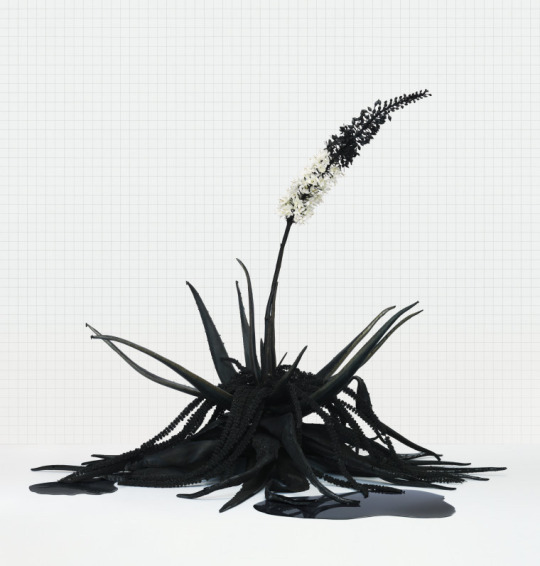
Troika, Plant Fiction: Selfeater (Agave autovora), 2010. Photograph by Troika 2010.
“A speculative design prop does not need to be realistic, just plausible.” - Anthony Dunne and Fiona Raby, Speculative Everything 95.
As you might remember from the book Speculative Everything, the above image is plant fiction designed by Troika. This plant “breaks down its own cellulose to aid ethanol fermentation… “- Speculative Everything 94. I was fascinated with these because if science can create an artful masterpiece that can aid in such things as “pollution”, it’s easy to envision a future with designs based on that idea. However, this is purely fictional and will surely not come to light but just the fact that that idea was planted into our heads upon reading this book, makes way for other plausible fiction and makes way for an infinite number of possible scenarios.

Plant Facts and Plant Fiction, Weeping Thief (Ficus Lacrima) by Troika
“Weeping Thief excretes a special liquid that acts as a security device for computers and smartphones. “ - artic.edu
You can find this at Art Institute Chicago or artic.org
3 notes
·
View notes
Text
Course Post #7: And the award goes to…

“Design is thinking made visual” - Saul Bass
If you ever decide to create something from your imagination, you can have the opportunity to enter it into the Muse Design Awards Conceptual Design of the Year. You could win this sleek statuette to show off, media interviews, a year of showcasing your work on the Muse website and magazine, and so many other benefits.
We love conceptual design because of the possibilities it brings. Although most of the time it’s just that, conceptual but the idea of bringing life to something that first rooted in your mind and to know that that creation was your own I’m sure can feel amazing. Looking at all the conceptual designs in the book Speculative Everything helps me to see that even my own ideas might not be so crazy. Maybe, you too can be a proud parent of a design you birthed.

Traces by Rong Zhang, Fashion, Apparel and Garment Design Award Winner
https://design.museaward.com/conceptual-design.php
4 notes
·
View notes
Text
Course Post #6: Sound Mapping

“By inviting people to experience, document, and share ideas about soundscapes in ways that were previously unimagined, sound maps have fundamentally altered perspectives on sound as it evolves in relation to space and place, our connection to sound in its environmental and spatial forms, and the many “resonances”—social, cultural, historical, and aesthetic—of these relationships” — Gascia Ouzounian
Gascia Ouzounian talks about sound maps and their usefulness in urban communities. These pictures I got from a website called Next that helps people interested in sound mapping to create their own. Sound maps are basically a map but for sounds. One particular area may have more natural sounds such as birds chirping or more mechanical sounds. It talks about the benefit of sound mapping and how it could help us to add to our experiences or to decrease the level of sounds we as individuals can tolerate.
If you would like to make your own personal sound map and experience it for yourself you can try it yourself.

2 notes
·
View notes
Text
Course Post #5: Soundscapes
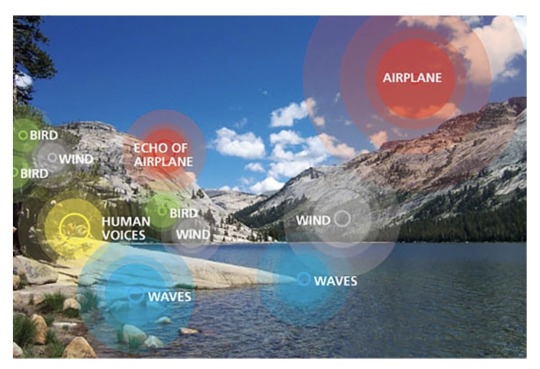
"Far more important than the places I have seen or what I have done or thought about
is the possibility of hearing the singing wilderness and catching, perhaps, its real meaning."
--Sigurd Olson, American author, environmentalist, and advocate for wilderness
After reading our last class article Acoustic City: Urban Soundscapes, I came across this article on the National Park Service website that contributes to the discussion a little more on soundscapes. In the article it says that they are in collaboration with a network of national parks to investigate the soundscape of Yosemite National Park. They will be analyzing a series of recordings recorded at “10 seconds at 2 minute intervals”. They are attempting to establish their level of soundscape now so that they can plan and manage the park based on the level of noises in different areas of the park. They are also studying how much sound affects visitors coming to the park.
They are attempting to minimize unnatural sound for a better park experience and to protect the natural atmosphere of nature. They have replaced their usual shuttle buses with hybrid buses and are working to reduce further airplane sound with the Federal Aviation Administration. In an attempt to maintain the integrity of the park they encourage visitors to be mindful of their noise levels and suggest tips on how to do that.
In Acoustic City: Urban Soundscape by Steven Connor, he talks about how humans essentially drew out the animals out of their habitats with our manufacturing of cities. Even now when we hear or see animals such as coyotes around our neighborhoods we panic. To us, certain animals do not belong.
Yosemite National Park is doing the same but in reverse. This time we are the one’s in their world and our sounds are not ideal for the natural environment. It could be that for many, we are no longer considered natural in a natural environment but that’s a discussion for another time.
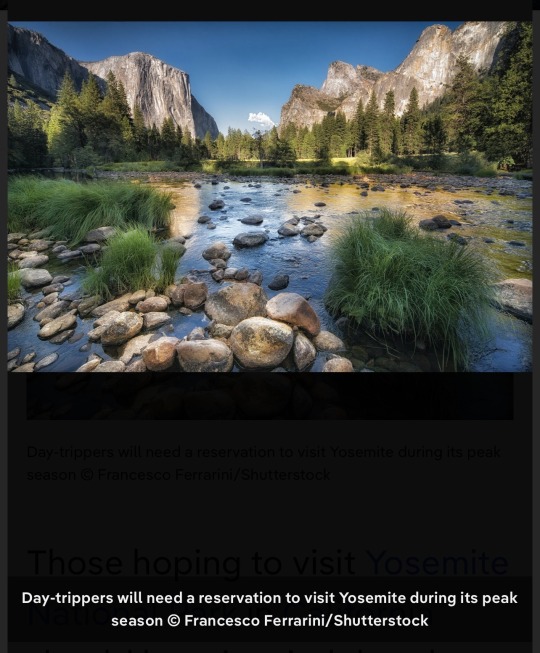
3 notes
·
View notes
Text
Course Post # 4: More Than Computer

Tumisu / Pixabay
“City making is always, simultaneously, an enactment of city knowing - which cannot be reduced to computation” - Shannon Mattern
Though we may modernize our streets, our homes, and everything around us for ease and convenience, we cannot expect a fully digital experience. There are certain aspects of humanity that are important and we should not lose sight of that. We need humans to see things, to feel things, to smell things and that can only create a better digital experience because we contributed to the human aspect to better reach and create better experiences for consumers or users. However, humans cannot lose sight of humans just because we want to modernize everything. We can keep things simple too. As Mattern says, “it’s essential to make space in our cities for those diverse methods of knowledge production and stewardship”.
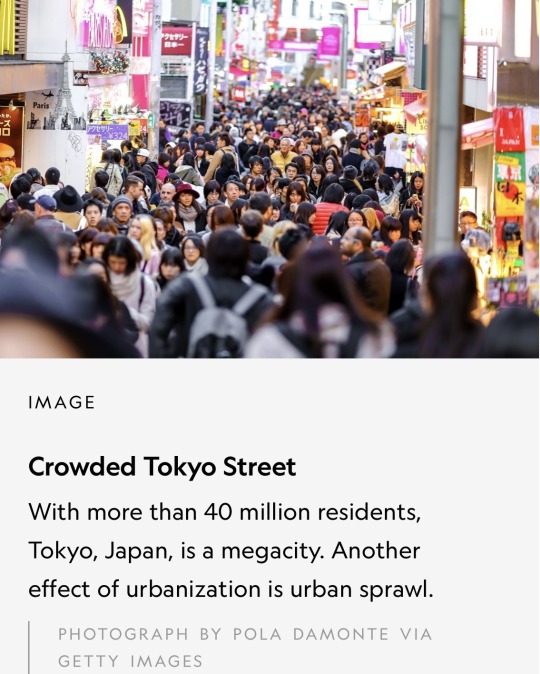
3 notes
·
View notes
Text
Course Post #3: Spaces of Vulnerability

Reading about spaces of vulnerability in Rogèrio De Paula’s article “City Spaces And Spaces For Design” got me trying to list every situation that allows for vulnerability to occur in a city. There are social, residential, and economic vulnerabilities but out of those is pollution. The added and concentrated pollution in one particular area such as a city can create more health problems for the people living there. Additionally, the poor are the most vulnerable to pollution related health problems. They are more susceptible to staying sick because of the difficulty it is to find care for one poverty stricken person. As things progress, we hope that solutions will arise to relieve this problem because what affects our environment, affects us all as many of these things connect

3 notes
·
View notes
Text
Course Post #2: Introduction to Accelerationism
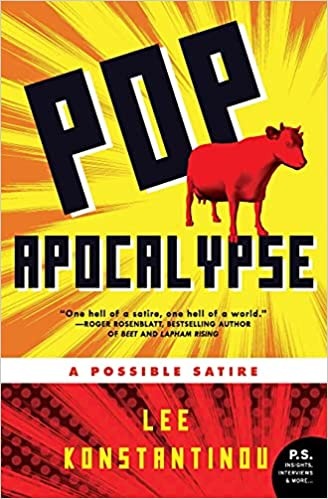

Illustration by Bratislav Milenkovic
“The hope driving accelerationism is that, in fully expressing the potentialities of capitalism, we will be able to exhaust it and thereby open up access to something beyond it.” - Steven Shaviro, No Speed Limit
In reading the first essay of Steven Shaviro’s book, No Speed Limit, Shaviro breaks down the idea of accelerationism and how certain science fiction novels such as Lee Konstantinou’s novel Pop Apocolypse have given people a glimpse into what it COULD be like if neoliberal capitalism were to dry up, as it were, and everything that stood for it. With the world in utter chaos, certain characters in the book have decided to take advantage of the situation to suit their own interests. It doesn’t matter that Konstantinou’s book could be purely satirical, what matters is that this book always contains elements of the our own present, following the patterns of what it COULD lead to in the future.
Accelerationists see us as draining capitalism to its dregs so that we can one day rebuild a better future. As Steven Shaviro says it’s, “the argument that the only way out is through” (Shaviro, No Speed Limit). Our cities are already being overrun with pollution from everything that humanity creates and so the idea is that eventually everything will implode down around us because we are already accelerating technology.
According to the idea of accelerationism, we are already on the right track.
3 notes
·
View notes
Text
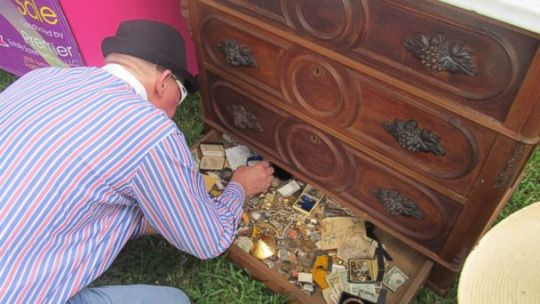
Course Post #1: On Estate Sales.
“I ALWAYS WANT OBJECTS IN MY HOME THAT HAVE A CONNECTION TO ME OR SOMETHING I'VE LOVED. IT'S STILL STUFF. BUT IT'S STUFF THAT HAS MEANING.”
- Nate Berkus QUOTESTATS.COM
I came across this story on ABC News where a man went into an estate sale and came out with hidden treasure. This man named Emil Knodell found objects such as jewelry, emeralds, and diamonds , a lock of hair, coins, and civil war tags, inside a dresser. By just glimpsing the treasures of this unknown person, Knodell gleaned that this person was probably a man that fought in the civil war, held a sense of patriotism, has been around the world, and experienced death and heartbreak as well. This is an opportunity to bring together this man’s treasures and piece together bits of this strangers life and documented all in one place so that future generations of greats can get a glimpse of the past and discover their life. This story reminded me of the reading we did “On Estate Sales, Archives, and the Matter of Making Things” by Jody Shipka.
Jody Shipka spoke about finding treasures at estate sales, particularly for two deceased people Dorothy and Fred. She gathers all the treasures she can find in order to document them for her story on this couple. She is attempting to discover the people they were through their things in life through their things after death. The same thing could happen through the discovery for this particular man’s treasure. Documentation of a life well lived.
Preserving a deceased person’s things shouldn’t just be a way for future generations to get to know and admire the life of their loved one but it should also be used to show how far we’ve come through just being humans, making mistakes, getting angry, feeling sentimental. That lock of hair for example. It could have been a lock of a beloved child’s hair (first haircut) or a woman. There is a story in that lock if hair and it’s the job of those left behind to figure out the story behind it. This is a way to treasure the past and appreciate the future that is to come.
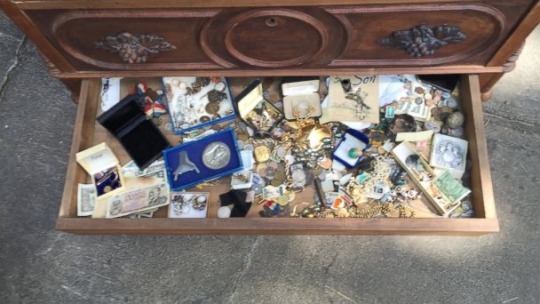
4 notes
·
View notes